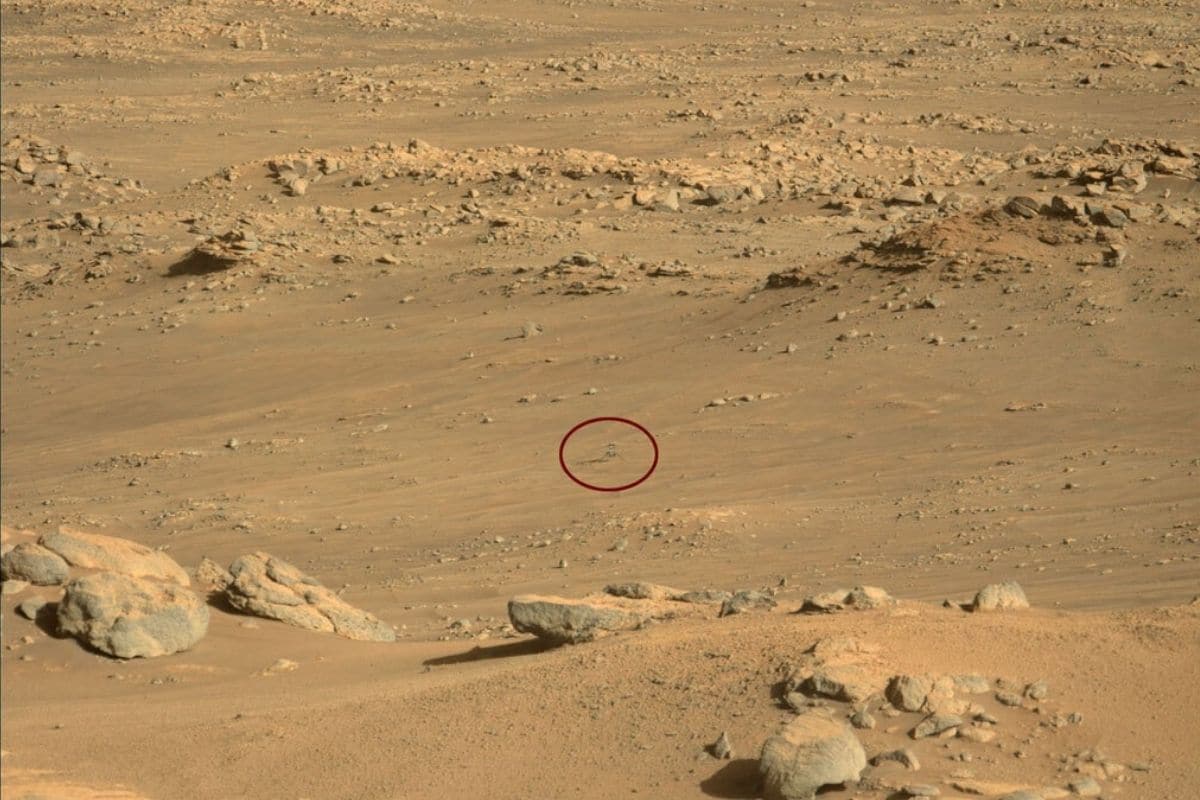
“Few expected that we would catch one flight. And no one at all thought we would get this far.”
Speaking is team leader of the Ingenuity team Teddy Tzanetos. And they certainly have something to celebrate at NASA. Mars helicopter Ingenuity has flown over the red planet for more than half an hour after its last flight. A beautiful and at the same time a very surprising milestone.
Flight 17
In early December, the Mars helicopter completed its 17th flight on Mars. And this flight was also a success. Ingenuity managed to fly through the air for no less than 117 seconds. And that means the helicopter has now spent a total of 30 minutes and 48 seconds in the thin Martian atmosphere. In addition, the groundbreaking helicopter has covered a total distance of 3,592 meters, has reached a height of no less than 12 meters and can move at a speed of no less than 5 meters per hour.

Mars helicopter Ingenuity just before its 17th flight. Can you spot it? Image: NASA/JPL-Caltech/ASU/MSSS
That the mission team has made it this far with Ingenuity is more than impressive. It is yet another milestone for the helicopter that the team never considered feasible. For example, Ingenuity is designed to carry out a maximum of five experimental test flights. But now the team is already preparing for flight number eighteen.
Unexpected
“Few expected that we would make one flight,” said Tzanetos. “And certainly no one thought we would get this far. Ingenuity has now survived eight months of bitter cold and took to the skies at nine different take-off points. Ingenuity’s continued flights are testament to the robustness of the design and the dedication and passion of our small, operational team.”
Exciting
Despite this success, Ingenuity made it exciting after his last flight. Just as the helicopter descended back to the surface, there was an unexpected interruption in the data stream. This meant that for a while the mission team was in the dark about whether Ingenuity had landed in one piece. However, the researchers were able to indulge themselves a few days later. Because new data showed that the Mars helicopter had successfully descended and is still in top condition.
It’s great that Ingenuity is still doing so well. Especially because the flights have become a bit more complicated over time. For example, during the first test flight, the helicopter flew at a speed of 1 meter per second to a height of 3 meters, hovered there for 30 seconds and then returned to the Martian surface. During the tenth flight, however, Ingenuity climbed to a record height of twelve meters, covered a distance of 95 meters in almost three minutes and performed no less than ten different maneuvers. Each time it flies just a bit further, higher or longer than the previous times. It shows that the Mars helicopter is capable of much more than the mission team thought possible.
Flight eighteen
Meanwhile, the team is already preparing for flight eighteen. During this upcoming flight, Ingenuity will travel an additional 230 meters, moving at a speed of 2.5 meters per second.
All in all, Ingenuity clearly shows how useful Mars helicopters can be for exploring other planets. Because that’s what it’s all about in the end. Ingenuity is really nothing more than a test case, in which researchers try to figure out how useful such helicopters are for studying Mars. In the future, for example, Mars helicopters could be used to map the surface of Mars in detail and reveal where rovers can best drive. They can also conduct research in areas that are difficult for robbers to access. And as Ingenuity shows, Mars helicopters are indeed extremely suitable for this.
Source material:
“NASA’s Ingenuity Mars Helicopter Reaches a Total of 30 Minutes Aloft” – NASA
Image at the top of this article: NASA/JPL-Caltech/ASU/MSSS